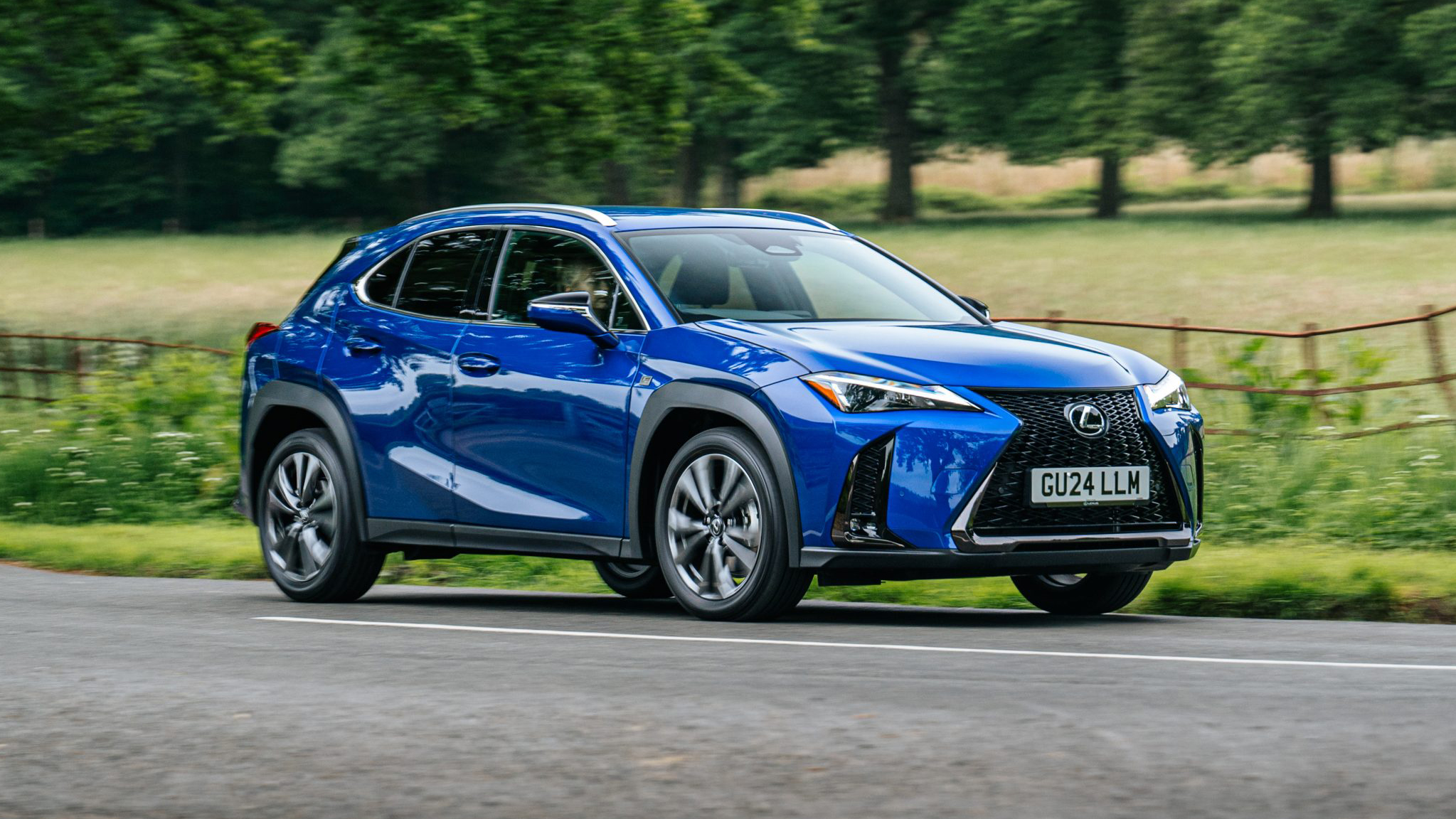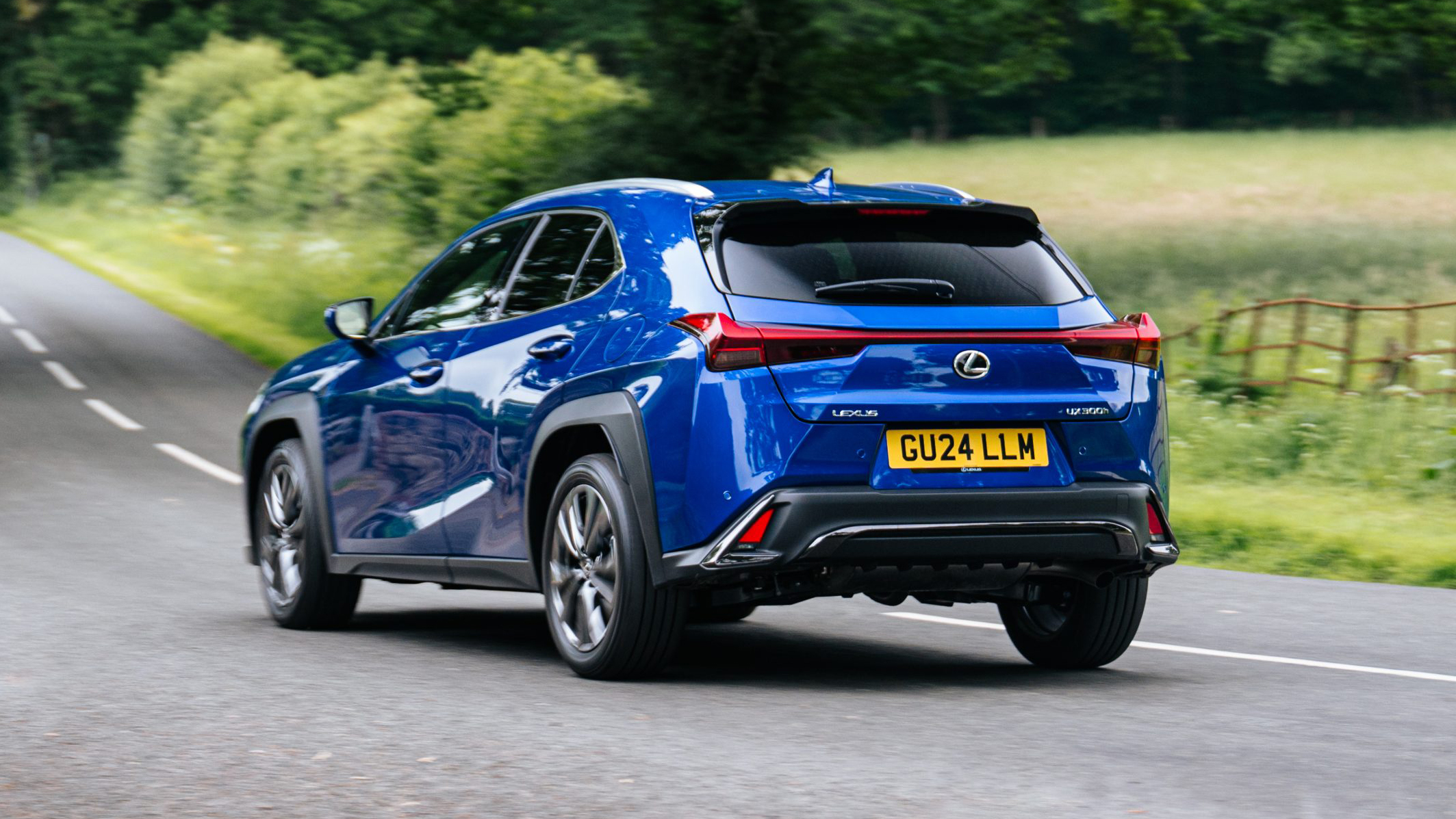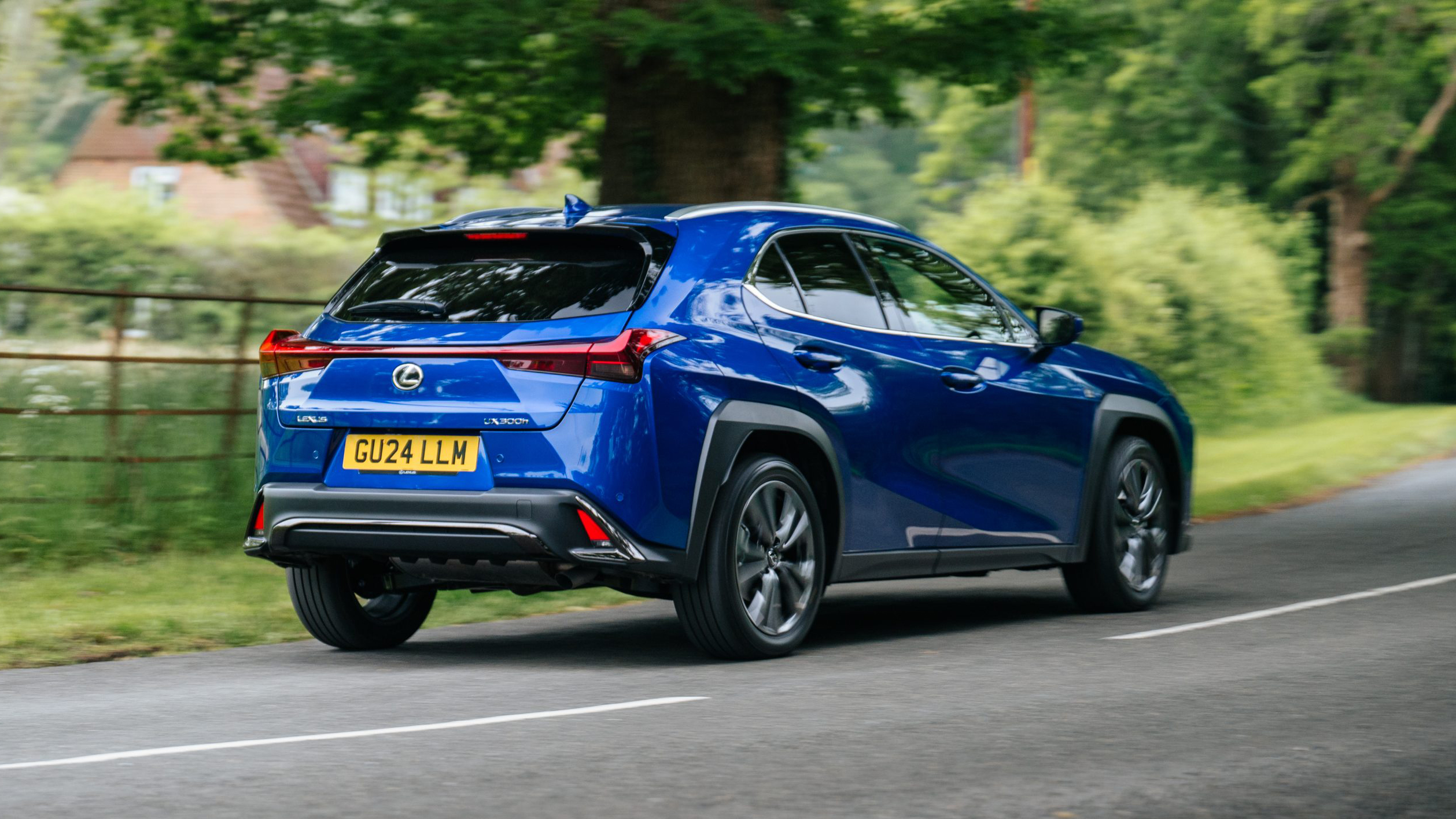
Good stuff
Alternative choice, more powerful and faster than before, highly efficient
Bad stuff
More expensive and less desirable than rivals, slightly tired cabin, small boot
Overview
What is it?
Well, it's no longer the entry-level model in the Lexus range, following the arrival of the younger, trendier LBX. It’s still a smallish crossover mind, albeit slightly bigger than the LBX, and sits below its bigger Lexus siblings, the NX and RX.
To keep it relevant Lexus has given it a power upgrade – more on that in a bit – and treated it to a few other luxuries for the 2024 model year. It’s still available with hybrid or electric powertrains: we’re focusing on the former here, click these blue words if it’s the EV you’re interested in.
Of course, the compact crossover sector is somewhat congested these days, to put it mildly, with the UX up against the likes of the BMW X1, Audi Q2, Jaguar E-Pace, Mini Countryman, Range Rover Evoque and Volvo XC40. So, without further ado…
What's new?
Took the words right out of our mouth. Well, the biggest news is that the UX250h has been replaced by the UX300h, complete with Lexus’ fifth generation self-charging hybrid technology. No plugging in necessary here.
While it retains the same 2.0-litre four-cylinder petrol engine and electric motor setup, power is up eight per cent – to 196bhp from 181bhp – thanks to new tech including a lithium-ion battery, which replaces the previous nickel-metal battery. This reduces the zero to 62mph time from 8.5 seconds to 8.1s.
Four-wheel drive remains available, only it’s now 5.6 times more powerful than its predecessor courtesy of its more powerful 40bhp rear electric motor, up from the previous dinky 7bhp unit. Here 0-62mph now takes 7.9s, down from 8.7s.
And it drives reasonably well: the ride’s good, bumps are absorbed nicely, and it all fits with the more relaxed nature of the hybrid set-up. If you’re looking for a B-road giggler, this isn’t going to do it for you, but if you like saving money on your fuel bills you’ll get on fairly well. Head over to the Driving tab for the lowdown.
What else do I need to know?
Exterior revisions are pretty much non-existent, but while styling is an entirely subjective appreciation, we like the way the UX looks; certainly more chic than some of its crossover rivals and with a better blend of SUV and hatchback design cues. It’s a strange phenomenon of current Lexuses, however, that they can be styled so distinctively yet blend in so comprehensively on the road.
Inside, however, all models now get a 7in or 12.3in fully digital instrument cluster (big tick from us), there’s now more insulation in an effort to reduce noise and vibration in the cabin, plus more safety tech.
Which is all great, but we still can’t help but think it feels dated in here, from the chunky steering wheel to those weird stubs either side of the instrument cluster, and the rather drab colour scheme. Still, it’s comfortable enough, and there’s good room for two adults in the back, as long as you don’t also have taller folk up front. The boot is a little small, and if you go for one of the higher spec 4WD versions, the already limited capacity shrinks again. Head to the Interior tab for more.
How much does it cost?
Prices start at £34,895 for the entry model or £43,895 if you want all-wheel drive. There’s four trim levels to choose between along with a multitude of optional packs, which can quickly drive the price up. Full details over on the Buying tab.
Our choice from the range

What's the verdict?
Lexus seems forever destined to be labelled as the alternative choice to whatever else is being offered on the market, and the UX isn’t going to change the status quo. But then Lexus isn’t chasing volume sales, it’s got parent Toyota for all of that.
The UX has its quirks and isn’t as comprehensively sorted as something like the Volvo XC40, nor as fashionable in certain circles as the Range Rover Evoque. It’s still worth looking over at the Jaguar E-Pace and BMW X1 if dynamics aren’t your main priority. And if they are, don’t be looking at small premium crossovers.
There are various PHEV and EV options out there now, but there are plenty of people who still aren't ready for it. The UX offers a proven hybrid powertrain, low tax and zero range anxiety.
The Rivals
Trending this week
- Car Review
Mazda MX-5










